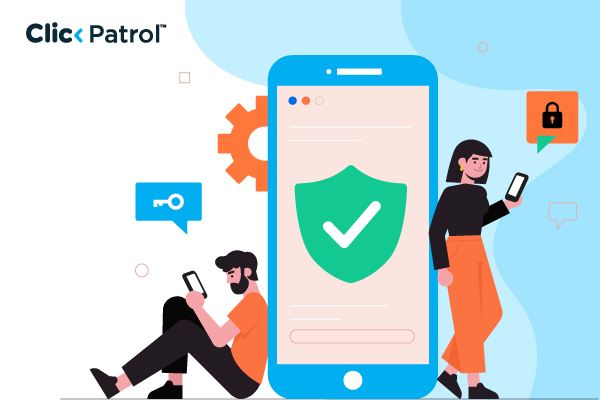
Botnet detection: Tools, techniques, and how to stop digital armies
Abisola Tanzako | Aug 20, 2025

Table of Contents
- What is a botnet?
- How do botnets work?
- Best anti-botnet tools compared
- 1. Cloudflare Bot Management
- 2. Akamai Bot Manager
- 3. DataDome
- 4. Imperva Advanced Bot Protection
- 5. PerimeterX (Human Security)
- Common signs of botnet activity
- 7 Effective botnet detection techniques for 2025
- 1. Network traffic analysis:
- 2. DNS Sinkholing: Catching bots red-handed by diverting their calls
- 3. Behavioral analysis:
- 4. Endpoint detection and response (EDR):
- 5. Threat intelligence feeds
- 6. Command and control (C2) detection:
- 7. Honeypots and deception technology:
- Use case: Mirai Botnet Attack (2016)
- Botnet detection is a non-negotiable in cybersecurity
- FAQs
Over 40% of global internet traffic is estimated to be from bots (Imperva, 2024). In the hidden corners of the internet, massive cyber armies are silently at work.
They do not wear armour or fly flags, and they do not storm your network with brute force. Instead, they infiltrate quietly, hiding inside everyday devices: phones, laptops, smart TVs, routers, waiting to strike when you least expect it.
This article will discuss botnets, how they operate, and, most importantly, how to detect and neutralize them before they wreak havoc.
What is a botnet?
A botnet (short for “robot network”) is a group of internet-connected devices that have been infected with malicious software and are controlled remotely by a cybercriminal, often referred to as a botmaster or controller.
Each infected device becomes a “bot” (or “zombie”) and can perform a variety of malicious tasks without the owner’s knowledge.
These tasks include:
- Sending spam emails
- Launching Distributed Denial-of-Service (DDoS) attacks
- Committing click fraud
- Credential stuffing (using stolen credentials to access multiple sites)
- Cryptojacking (using your system to mine cryptocurrency)
- Data harvesting and keylogging
How do botnets work?
To stop a botnet, you need to understand its life cycle. Botnets typically operate through 3 major phases:
1. Connection to Command and Control (C2): Once infected, the device connects to a Command and Control server, a central system operated by the botmaster.
2. Execution of malicious tasks: Bots carry out tasks assigned by the C2. These can range from sending spam to participating in coordinated attacks.
3. Maintenance and persistence: Botnets evolve. They may change C2 domains or IPs to avoid detection, receive updates, or even
move to peer-to-peer (P2P) communication models that do not rely on a central server.
Best anti-botnet tools compared
Here is a comparison of the best anti-botnet tools available today, focusing on their features, strengths, ideal use cases, and pricing (if available).
Organizations use these tools to detect, prevent, and mitigate botnet attacks, including credential stuffing, DDoS, web scraping, and fraud.
1. Cloudflare Bot Management
Best for: Enterprises needing robust bot protection with CDN integration
Key features:
- Machine learning-based bot detection
- Real-time traffic scoring
- Integrated with Cloudflare CDN and WAF
- JavaScript and behavioral challenges
Strengths:
- Excellent performance and global network
- Low latency
- Protects APIs and mobile apps
Limitations:
- Enterprise-level pricing
- May require technical expertise to configure
Pricing:
- Quote-based (Enterprise plans)
2. Akamai Bot Manager
Best for: Large businesses dealing with complex bot threats
Key features:
- Bot categorization (good vs. bad bots)
- Granular policy management
- Integrated threat intelligence
Strengths:
- Leader in DDoS and bot mitigation
- Flexible rule configuration
Limitations:
- Can be expensive
- Complex UI for beginners
Pricing:
- Enterprise pricing on request
3. DataDome
Best for: E-commerce and SaaS platforms
Key features:
- Real-time bot detection using AI
- Covers web, mobile, and APIs
- Compatible with major CDNs (Cloudflare, Fastly)
Strengths:
- Easy setup and integration
- Detailed dashboard and threat analytics
Limitations:
- May require tuning for edge cases
Pricing:
- Starts at $3,990/month (as of last known info)
4. Imperva Advanced Bot Protection
Best for: Businesses needing protection from web scraping and account takeovers
Key features:
- Device fingerprinting
- Behavioral analytics
- CAPTCHA and JavaScript challenges
Strengths:
- High detection accuracy
- Strong DDoS protection integration
Limitations:
- It may be overkill for small businesses
Pricing:
- Custom pricing
5. PerimeterX (Human Security)
Best for: Retail, travel, and media platforms
Key features:
- Bot Defender with behavior-based analysis
- Mobile SDK support
- Detects automated account fraud
Strengths:
- Great for real-user vs bot distinction
- Real-time analytics and alerting
Limitations:
- Requires some implementation effort
Pricing:
- Enterprise only, quote-based
Common signs of botnet activity
Spotting a botnet infection is not always straightforward, but specific symptoms can signal a problem:
- Unusual network traffic: Sudden spikes in outgoing traffic or irregular traffic patterns, especially to unknown IPs.
- Slow system performance: Bots can eat up system resources, slowing down your computer or device.
- Strange background processes: Unknown processes or excessive CPU usage when the device is idle.
- Increased bandwidth usage: Botnets often generate high amounts of data through spam, DDoS, or data exfiltration.
- Blacklisting: If your domain ends up on a spam blacklist, it could be sending junk emails unknowingly.
7 Effective botnet detection techniques for 2025
Below are the most effective and widely adopted methods for botnet detection, each explained in detail.
1. Network traffic analysis:
Monitoring the digital pulse of your environment, Network traffic analysis is the first and most fundamental line of defence.
By examining the data moving across your network, you can identify patterns that signal botnet activity.
Key signs include:
a.) Unusual outbound connections: Bots often communicate with their Command and Control (C2) servers.
These communications can appear consistent, outbound traffic to suspicious or rarely used IP addresses and ports.
b.) Repeated domain requests: Infected devices may repeatedly try to connect to domains that are generated using Domain
Generation Algorithms (DGAs), a technique used to avoid blacklists.
c.) Time-based anomalies: Bots may operate during off-hours or when the legitimate user is idle.
Unexplained activity at 3 AM could be a red flag.
d.) Data exfiltration patterns: Large, unexplained data uploads from internal systems could
indicate a bot siphoning sensitive information.
2. DNS Sinkholing: Catching bots red-handed by diverting their calls
DNS sinkholing is a clever technique to disrupt botnet communication by rerouting traffic that typically goes to a Command and Control server.
How it works:
- A sinkhole server mimics a legitimate DNS server.
- When a bot-infected machine tries to contact its C2 domain, it is silently rerouted to the sinkhole.
- The sinkhole does not execute malicious commands; instead, it logs the infected device’s activity, IP address, and attempted communication.
3. Behavioral analysis:
Unlike signature-based detection, which relies on known malware patterns, behavioral analysis focuses on anomalies in system behavior. Examples include:
- A user who never uses FTP suddenly initiates FTP sessions.
- A process that accesses hundreds of different IP addresses within minutes.
- A machine rapidly creates multiple outbound connections to external hosts.
4. Endpoint detection and response (EDR):
EDR platforms are like security cameras on every device in your network.
They continuously monitor system activity and automatically respond to threats in real-time.
What EDR tools typically monitor:
- File integrity: Detects unauthorized file changes, such as replacing a system file with a malicious version.
- Process behavior: Flags unusual behavior like a non-browser process opening a network socket.
- Registry changes: Notifies administrators if malicious code tries to alter startup settings or create persistence.
5. Threat intelligence feeds
They are curated databases of known malicious indicators, IP addresses, URLs, domain names, file hashes, and behavioral patterns that are updated in real-time.
There are commercial (e.g., IBM X-Force, Recorded Future) and open-source feeds (e.g., AbuseIPDB, AlienVault OTX).
Using these feeds, detection systems can:
- Block outgoing requests to known botnet C2 servers.
- Flag file downloads that match known malware signatures.
- Identify bots operating on your network by cross-referencing suspicious activity with known attack campaigns.
6. Command and control (C2) detection:
Even if the botnet is well-hidden, communicating with its C2 infrastructure can reveal its presence.
Botnets often:
- Use encrypted communication over HTTP/HTTPS or DNS tunnelling.
- Employ randomly generated domains to avoid blacklisting.
- Attempt regular heartbeats or updates from the C2 server.
7. Honeypots and deception technology:
A honeypot is a deliberately vulnerable system to attract attackers.
More advanced deception technologies include:
- Honeytokens (fake credentials or data that alert you when used)
- Deception grids that simulate full networks to distract and trap bots
- Decoy applications embedded in real environments to detect lateral movement.
Use case: Mirai Botnet Attack (2016)
In 2016, the Mirai botnet infected thousands of vulnerable IoT devices like cameras and routers by exploiting default usernames and passwords.
This turned them into a massive botnet used to launch record-breaking DDoS attacks.
One of its biggest incidents was the attack on Dyn, a primary DNS provider, which brought down websites like Twitter, Netflix, Reddit, and GitHub across the U.S. and Europe.
The attack overwhelmed Dyn’s servers with traffic exceeding 1 Tbps, temporarily making large parts of the Internet inaccessible.
This incident highlighted the risks of unsecured IoT devices and pushed for stronger cybersecurity standards in the industry.
Botnet detection is a non-negotiable in cybersecurity
Every day, millions of compromised devices quietly execute commands for someone else.
They steal, disrupt, and manipulate at scale, all while hiding in plain sight.
Whether running a business, managing a network, or simply browsing from home, botnet detection is no longer optional; it is foundational.
Understanding how botnets work, spotting their symptoms, and using layered defence strategies can protect your data, users, and digital infrastructure from becoming just another cog in a cybercriminal’s machine.
FAQs
Q. 1 What is the difference between a botnet and malware?
A botnet is a network of devices infected by malware. Malware is the malicious software used to control the device; the botnet is the collective group of infected devices acting under a single controller.
Q. 2 What are some tools for detecting botnets?
Some practical tools include Wireshark, Snort, Zeek, CrowdStrike Falcon, SentinelOne, and Darktrace.
They range from open-source network analyzers to enterprise-grade EDR systems.





